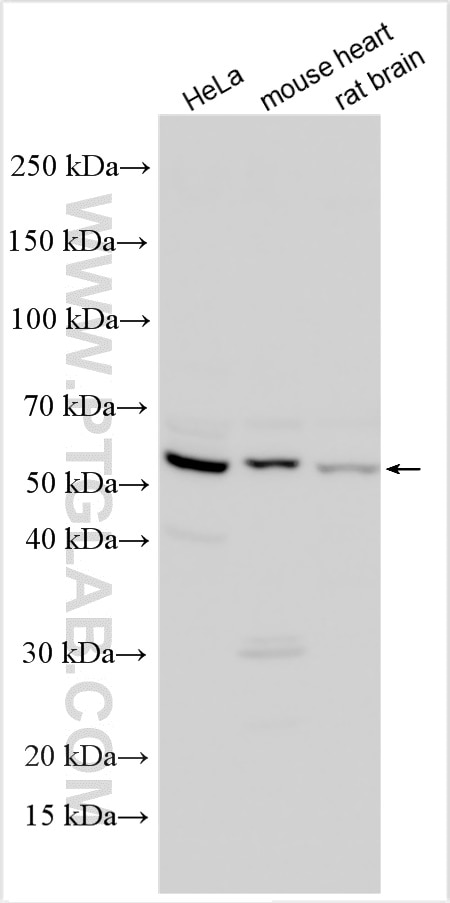Tested Applications
| Positive WB detected in | HeLa cells, mouse heart tissue, rat brain tissue |
Recommended dilution
| Application | Dilution |
|---|---|
| Western Blot (WB) | WB : 1:500-1:2000 |
| It is recommended that this reagent should be titrated in each testing system to obtain optimal results. | |
| Sample-dependent, Check data in validation data gallery. | |
Product Information
30493-1-AP targets DUSP10 in WB, ELISA applications and shows reactivity with Human, Mouse, Rat samples.
| Tested Reactivity | Human, Mouse, Rat |
| Host / Isotype | Rabbit / IgG |
| Class | Polyclonal |
| Type | Antibody |
| Immunogen |
CatNo: Ag32718 Product name: Recombinant human DUSP10 protein Source: e coli.-derived, PGEX-4T Tag: GST Domain: 1-288 aa of BC031405 Sequence: MPPSPLDDRVVVALSRPVRPQDLNLCLDSSYLGSANPGSNSHPPVIATTVVSLKAANLTYMPSSSGSARSLNCGCSSASCCTVATYDKDNQAQTQAIAAGTTTTAIGTSTTCPANQMVNNNENTGSLSPSSGVGSPVSGTPKQLASIKIIYPNDLAKKMTKCSKSHLPSQGPVIIDCRPFMEYNKSHIQGAVHINCADKISRRRLQQGKITVLDLISCREGKDSFKRIFSKEIIVYDENTNEPSRVMPSQPLHIVLESLKREGKEPLVLKGGLSSFKQNHENLCDNSL Predict reactive species |
| Full Name | dual specificity phosphatase 10 |
| Observed Molecular Weight | 53 kDa |
| GenBank Accession Number | BC031405 |
| Gene Symbol | DUSP10 |
| Gene ID (NCBI) | 11221 |
| RRID | AB_3086335 |
| Conjugate | Unconjugated |
| Form | Liquid |
| Purification Method | Antigen affinity purification |
| UNIPROT ID | Q9Y6W6 |
| Storage Buffer | PBS with 0.02% sodium azide and 50% glycerol, pH 7.3. |
| Storage Conditions | Store at -20°C. Stable for one year after shipment. Aliquoting is unnecessary for -20oC storage. 20ul sizes contain 0.1% BSA. |
Background Information
DUSP10, also known as MKP5, is a member of the MKPs subfamily involved in cell proliferation, differentiation, and migration. DUSP10 is a dual specificity phosphatase capable of dephosphorylating both pTyr and pThr residues of activated MAPKs with different affinities. It has been shown that isoforms of the p38 and JNK subfamilies are selectively and more effectively dephosphorylated than ERK subfamily members. DUSP10 has been proposed as a target for therapeutic treatment of atherosclerosis, since DUSP10 inhibition reduces NF-κB-induced TNF-α expression and increases TGF-β1 levels in this disease (PMID: 30939861).
Protocols
| Product Specific Protocols | |
|---|---|
| WB protocol for DUSP10 antibody 30493-1-AP | Download protocol |
| Standard Protocols | |
|---|---|
| Click here to view our Standard Protocols |




